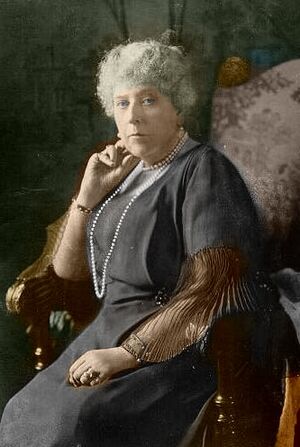The Ypres League facts for kids
The Ypres League was a special group in Britain. It was started after World War I on September 28, 1920. Its main goal was to help soldiers who fought in the tough battles around a place called the Ypres Salient in Belgium.
The League wanted to remember all the brave people who died there. It also helped visitors who traveled to see the battlefields. The group was based in London and published a newsletter every three months. They also made a guide book for Ypres. The League offered many services to its members, like special membership papers. They even helped build a memorial church in Ypres. The Ypres League grew and had branches in other countries. It was still active in the 1940s.
Contents
Who Started the Ypres League?
The Ypres League was founded by a Canadian soldier named Colonel Beckles Willson. He was a veteran of the Ypres battles.
Important Supporters of the League
By December 1920, King George V agreed to be a patron of the League. A patron is someone important who supports a group. By 1925, there were three main patrons:
- King George V
- Edward, Prince of Wales (who later became king)
- Princess Beatrice
Princess Beatrice was the youngest daughter of Queen Victoria. She had a very personal reason to support the League. Her son, Prince Maurice of Battenberg, was killed in action in 1914 during the First Battle of Ypres.
Leaders of the League
The President of the League was John French, 1st Earl of Ypres. He was the first commander of the British Expeditionary Force during the war. Many other important generals from the war were also part of the League's committee in 1925. These included:
- Earl Haig
- Viscount Allenby
- Lord Plumer
- Sir William Pulteney Pulteney
Viscount Burnham also joined the committee. He represented a group called the Anglo-Belgian Union.
Remembering the Fallen Heroes
More than 250,000 soldiers from Britain and its allies died in the Ypres battles. One of the League's main goals was to create lasting memorials for them.
Building a Memorial Church
In 1924, the League suggested building a special memorial church in Ypres. They raised money for this project. This led to the building of Saint George's Memorial Church, Ypres. It was officially opened in 1929.
Other Important Memorials
The League also helped with other memorials. They contributed to the Demarcation Stones. These were 118 red granite pillars. They marked the exact line of the Western Front during the war. The League paid for seven of these markers to be placed in the Ypres area.
Ypres Day Commemorations
The League held yearly events on October 31. This day was called Ypres Day. It was chosen to mark a key moment in the First Battle of Ypres in 1914.
On Ypres Day in 1921, about 800 people traveled to Ypres. The League organized this trip. In 1930, the League celebrated its tenth anniversary. Princess Beatrice laid a wreath at the Cenotaph in London. This was a special parade. She repeated this wreath-laying in 1935 for the League's 15th anniversary.
Publications and Member Services
The Ypres League created many helpful materials. They also offered services to their members and families.
Newsletters and Books
The League published a newsletter called The Ypres Times. It first came out in October 1921. It was still being published as late as 1938. They also published books like The Immortal Salient in 1925. This book shared the history of the battles. It also served as a guide for people visiting Ypres.
A famous war reporter, Philip Gibbs, wrote about the terrible conditions at the Ypres Salient. His writings were used in the League's information leaflets. The League also planned to publish a book called the Ypres Book of Valour. They even had a special marching song. It was called Tramping along to a little tin whistle and an old toy drum. A version of this song was published in 1926.
Help for Members and Families
The League gave out framed membership certificates. These were for veterans and families who had lost loved ones. The certificates were designed by Bernard Partridge. They were meant to be a special honor.
The League also worked with the St Barnabas Society. Together, they set up a Pilgrimage Centre in Ypres. This was a rest room for visitors. They also raised money to help families visit Ypres. This was especially for those who had lost soldiers and were struggling financially. The League also worked with the Imperial War Graves Commission. They helped create lists of those buried or lost in the Salient. They also gathered historical information for visitors and members.
People could join the League for life or pay yearly fees. There were also lower fees for younger members.
International Branches of the League
In the early 1920s, news about the Ypres League spread. Newspapers in countries like Australia, New Zealand, and Canada shared the news. These countries had soldiers who fought in the Ypres Salient. This led to the creation of several international branches of the League.
However, a branch in the USA was not set up until ten years later. In March 1931, the League's representative in the USA gave the Ypres Medal to officers. These officers were from the 27th Infantry Division. They had fought in the Fourth Battle of Ypres. This was the first time Americans received this award. The US branch of the League officially started a few days later. It began at a dinner in New York with 500 people attending.


